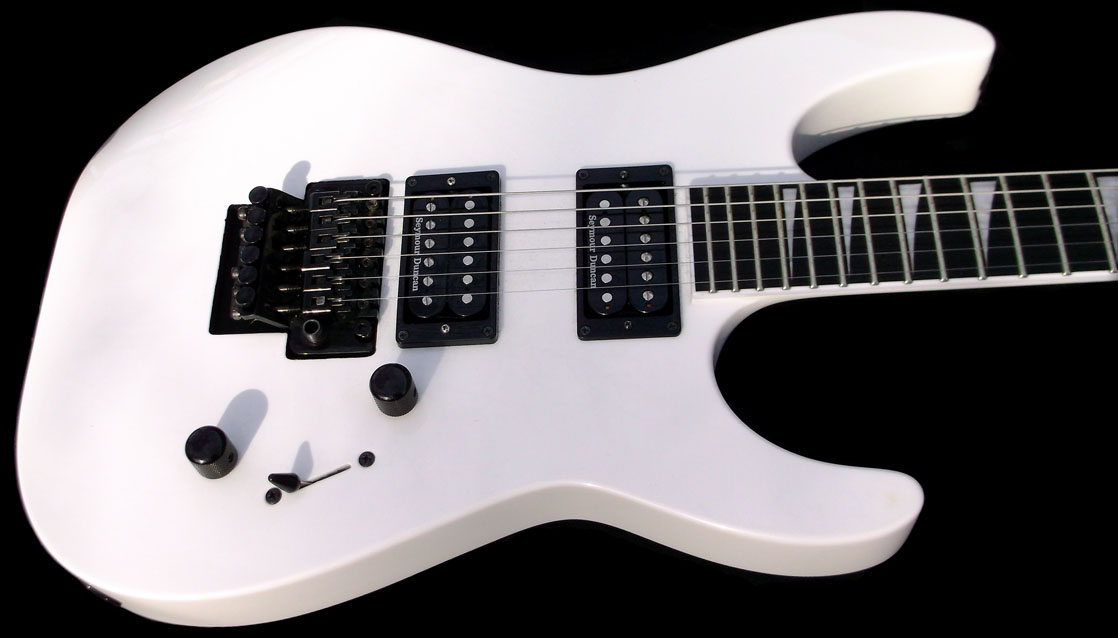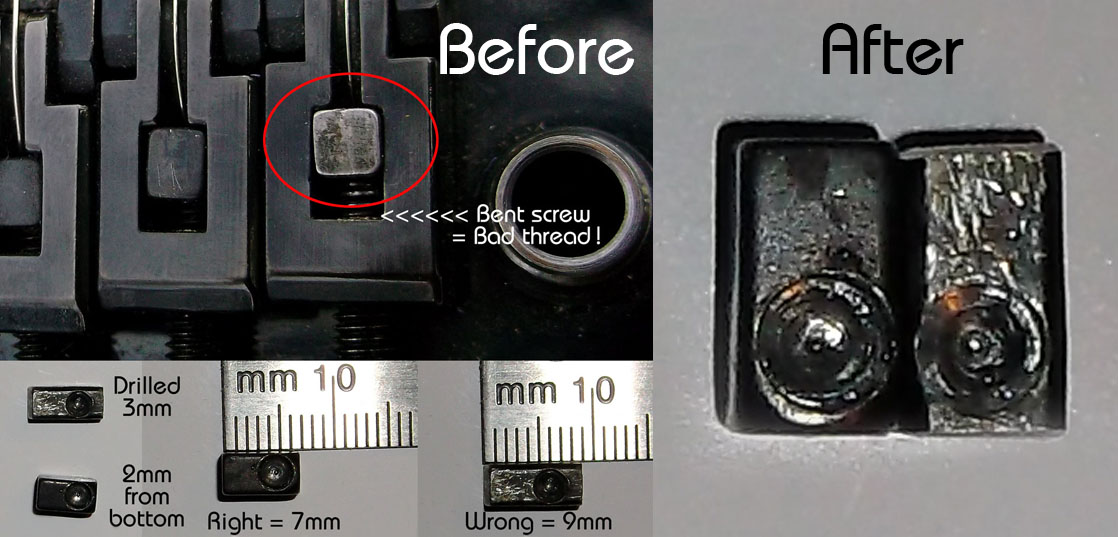The problems as discribed:
The owner of this Jackson Soloist XLS made around 2013, told me that the 3rd string buzzed when not fretted, and the 1st does not ring (is dead) on the down stroke, but rings fine on the up stroke. He said that he sets up his guitars by himself, and knows how to deal with fret buzz, but that this was way different, and in his words "for the life of me, I can not figure out where the problems are".

Finding the buzz:
My first thought on the 3rd string buzz, was "resonant frequency" as I could tell right away that it had a sound not indicative of frets, metal or the like. The method I used to Isolate it was to play the string without the guitar plugged into an amp, and listen closely to where it was coming from. When I could hear that it was coming from somewhere on the body I just played the string, and put my fingers on the various parts, one at a time in order to muffle them. As soon as I had a finger on the neck pickup mounting ring, the buzz seized. I isolated it further, and noticed that the edge of the pickup was just close enough to touch the ring slightly, and buzzed when playing an F# (the guitar was down tuned half a note, for heavy metal).
The fix was as easy as raising the pickup slightly, as it was extremely low to begin with. Further adjustments were to be made during setup, in order to adjust the tone (warmth) between the two pickups, for the different switching positions.
The dead string:
Since the string did not ring even when played on the last fret, the problem was obviously with the saddle. The first thing I saw was that the lock down for the string was installed cockeyed, as You can see in the picture below, at the top. Turns out that it was taken from another bridge, which was of the "Licensed by Floyd Rose" kind, and obviously did not fit right. Not only was it taller, but the recess for the set screw was higher up, and the screw was bent because of someone forcing it in trying to make it work.
Also visible in the picture is how poorly the edge of the routed recess for the bridge is finished. It looks like they did not even try to smooth it out one bit, which may attest to today's low quality standards.

After filing down the bottom of the string retainer to make the set screw seat properly, and the top a bit so it does not stick out, I could attach the string right, and see if it did the trick. With the string properly seated, it still was dead on the down stroke, meaning that the string groove was malformed.
Thanks to my trusty hand held microscope, I could see how the string groove was uneven, but did not look as if it had warn out that way, rather that the mold it came out of was not in the best of shape. Either way, I had to file the groove into the shape it was designed to have, which is not easy on a Floyd Rose saddle, as the string rolls over it when using the whammy bar, and it is around 10mm long. It was not enough to round out the distorted portion by itself, but the groove had to be re-arched all the way back to the string retainer, so that the pitch of the string changes in proportion to the other ones, when using the whammy.

The picture above shows the repair to the string retainer, where the one on the right is the one I adjusted to fit right. Although it looks all scratched up, it is actually just how the lacquer came off during repair, and does not affect it's performance at all. I tried to get a couple of closeups of the string groove, but my camera is not good enough, and can not be focused manually, so they did not turn out.